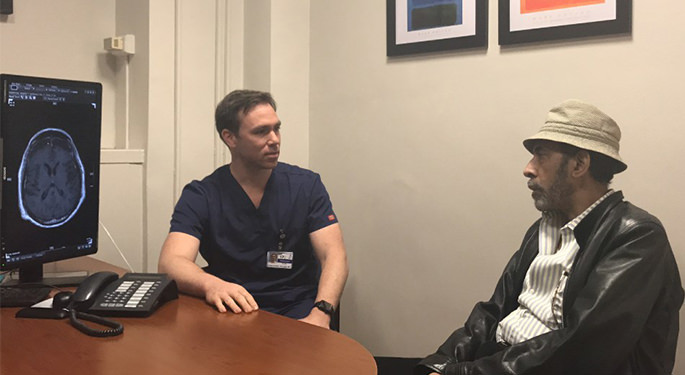
Vasospasms
Our experts specialize in evaluating and treating cerebral vasospasm. Vasospasm occurs when a brain blood vessel narrows, blocking blood flow. It can occur in the two weeks following a subarachnoid hemorrhage or brain aneurysm. You are at greater risk for a cerebral vasospasm if you have had a recent subarachnoid hemorrhage or ruptured brain aneurysm.
The signs of a cerebral vasospasm are fever, neck stiffness, mild confusion, speech impairment, paralysis on one side of the body, and severely impaired consciousness.
Diagnosis
Our physicians closely monitor all patients recovering from treatment of a subarachnoid hemorrhage or brain aneurysm. Based on your symptoms, our physicians may perform the following tests:
- Cerebral angiography is an X-ray using contrast dye
- Computed tomography (CT) scans help us determine the likelihood of a vasospasm occurring. We may do an additional CT scan during the post-treatment period following a subarachnoid hemorrhage or brain aneurysm
- Transcranial Doppler ultrasounds give us information about blood flow through our skull and is efficient and non-invasive. We can do it at your bedside. We often use it to follow at-risk patients for the development and progression of vasospasms.
- Magnetic resonance imaging can help us see how much of your brain tissue has been damaged by the vasospasm.ment Options
Treatment Options
If you have been treated for a subarachnoid hemorrhage or brain aneurysm, we monitor you carefully for signs of developing cerebral vasospasm. We may prescribe a course of oral calcium channel blockers or recommend hypervolemic-hypertensive-hemodilution therapy. This therapy carefully balances your fluids and blood concentration to improve blood flow in your brain.